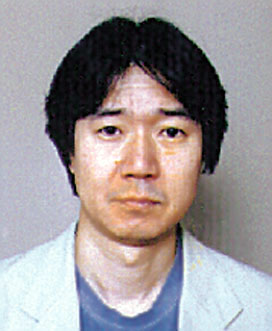
Name : KAWAKATSU, Hitoshi
Position : Professor
Division/Center : Ocean Hemisphere Research Center
Research Area : Seismology
homepage : http://gachon.eri.u-tokyo.ac.jp/~hitosi/

Name : KAWAKATSU, Hitoshi
Position : Professor
Division/Center : Ocean Hemisphere Research Center
Research Area : Seismology
homepage : http://gachon.eri.u-tokyo.ac.jp/~hitosi/
Research
Seismological study of the Earth's
deep interior
In the past several years, Fenglin
Niu (now at Carnegie Institution of Washington) and I have been investigating
the detailed
structure of the mantle transition
zone discontinuities. We utilize a large number of seismic array data to
enhance and detect weak
signals of converted (or reflected)
phases at those discontinuities. Our contribution in this field is unique
in a sense that we have
found lines of seismic evidence
for the presence of discontinuities below the 660km-discontinuity (Kawakatsu
and Niu, 1994; Niu and
Kawakatsu, 1996). The result for
the Indonesian is indisputable, and shows strong evidence for the presence
of the mid-mantle
discontinuities, above which high
velocity anomaly can be seen in tomographic models(Niu and Kawakatsu, 1997;
Vinnik, Niu and
Kawakatsu, 1998). The physical
origin and geodynamical significance of the mid-mantle discontinuities
are the current theme of our
investigation.
Broadband seismometry at active
volcanoes
It has been known that there is
a lack of information in the geophysical monitoring of active volcanoes.
In the conventional
seismometry, the period range
between 1 and several 100 seconds has not been monitored at most volcanoes
of the world. To cover
this period range, we have installed
portable broadband seismometers at several active volcanoes. Among them
Aso volcano
constantly emits unusually long-period
(15sec) seismic signals. By analyzing those data, we have detected a hydrothermal
reservoir
beneath the active crater. We
have also detected "very long-period" signals few minutes prior to phreatic
eruptions(Kaneshima,
Kawakatsu et al., 1996). In the
future these signals would be used to give immediate warnings for eruptions.
More recently we have
detected a crack-like conduit
beneath the crater (Yamamoto, Kawakatsu et al., 1999). We believe that
these studies are among the
best seismological studies ever
conducted at active volcanoes. Co-investigators: Satoshi Kaneshima (Tokyo
Institute of
Technology), Takao Ohminato (ERI),
Yasuaki Sudo (Kyoto Univesity).
Realtime monitoring of the earthquake
activity field
Our moment tensor solutions for
world's major earthquakes (M>5.5) are now well known as "ERI AutoCMT solutions",
which are
distributed to more than 200 researchers
of the world (Kawakatsu, 1995). We have also developed automated moment
tensor
determination systems for regional
scale (whole Japan) and local scale (Kanto area) problems, and solutions
are also distributed to
the community. Recently we realized
that it should be possible to monitor in realtime the long-period (>10sec)
wavefield to infer
corresponding seismic activity
field (i.e., earthquakes when they occur) (Kawakatsu, 1998, BERI). This
system may eventually let us
predict strong motion wavefield
almost in realtime, base on data from a sparse local scale broadband network.
Publications:
Kawakatsu, H. and F. Niu, Seismic Evidence for a 920km discontinuity in the mantle, Nature, 371, 301-305, 1994
Kawakatsu, H., Automated near-realtime CMT inversion, Geophys. Res. Lett., 22, 2569-2572 1995.
Kaneshima, S., H. Kawakatsu, H. Matsubayashi, Y. Sudo, T. Tutui, T. Ohminato, H. Ito, K. Uhira, H. Yamasato, J. Oikawa, M. Takeo, T. Iidaka, Mechanism of Phreatic Eruptions at Aso Volcano Inferred from Near-Field Broadband Seismic Observations, Science, 273, 642-645, 1996.
Kawakatsu, H.,, On the realtime monitoring of the long-period wavefield, Bull. Earthquake. Res. inst., 73, 267-274, 1998.
Kawakatsu, H., S. Kaneshima, H. Matsubayashi, T. Ohminato, Y. Sudo, T. Tutui, K. Uhira, H. Yamasato, H. Ito, D. Legrand, Aso-94: Aso seismic observation with broadband instruments, J. Vol. Geothermal Res., 101, 129-154, 2000.